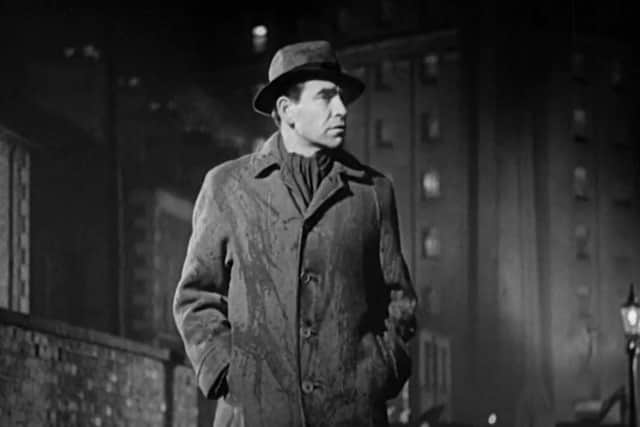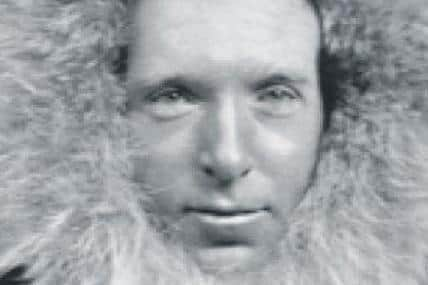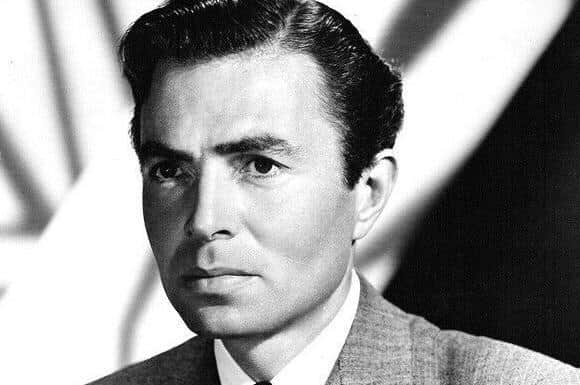Did Lecky Road man Hugh Martin inspire noir classic Odd Man Out?
and live on Freeview channel 276
Carol Reed's political thriller starring James Mason as Johnny McQueen - a member of an 'illegal organisation' in 'a city of Northern Ireland' - is a feature-length adaptation of FL Green's 1945 novel of the same name.
Shot in East London and Belfast, 'Odd Man Out' has been admired by Martin Scorsese and was once described by the author Gore Vidal as a 'near-perfect film'.
Advertisement
Hide AdAdvertisement
Hide AdToday it is considered a classic of the genre and by some a greater film than Reed's masterpiece 'The Third Man'.


While 'Odd Man Out' is usually assumed to be a Belfast film, a former member of the old IRA in Derry, in the early 1950s, claimed it was based on the life of one of his comrades.
Michael Sheerin, O/C of No. 1 Section of the IRA on Derry’s west bank during the Tan War, providing evidence to the Bureau of Military History at Baldonnel Aerodrome in 1953, controversially claimed the film was inspired by one Hugh Martin from the Bogside.
"Hugh Martin became an American journalist. The film of recent issue 'Odd Man Out' is said to be based on incidents of his life at the period. As a matter of interest it reflects the atmosphere very well except the Royal Ulster Constabulary is substituted for the Royal Irish Constabulary and glamorized.
Advertisement
Hide AdAdvertisement
Hide Ad"The IRA is, of course, toned down. The RUC was not formed until 1922. Later Martin went to Australia and formed the Martin Gang of ill fame," Sheerin stated.


Martin was from the Lecky Road and a member of the Charles McGuinness 'Flying Column' raised in Derry and active in Donegal in the spring of 1921.
The legendary McGuinness, from the Lower Road, who deserves to have a film made about his life, identified Martin as his second-in-command in his memoir 'Sailor of Fortune'.
In fact, Martin assumed command of the 'Flying Column' when McGuinness was badly injured during a shoot-out amid the dunes at Rosbeg in the Downstrands area of West Donegal.


Advertisement
Hide AdAdvertisement
Hide AdAnother republican, Liam A. Brady, O/C, of Fianna Éireann in Derry from 1920 to 1922, in his evidence to the BMH related: “McGuinness the O.C. seeing that his men were outnumbered by 20 to 1 gave orders for his men to scatter while he and Hughie Martin kept the enemy at bay until their comrades were safely away. McGuinness turned to speak to Martin when he got struck by two bullets, one in the side which was only a skin wound and the other a severe laceration of the hip.
“He continued firing and shouted for Martin to get away. In spite of the pain of his wounds and loss of blood, being determined to hold the fort, he did so until Martin got safely away. The Military and Police returned the fire but were afraid to advance as they expected the return of the rest of the Column and they were taking no chances. Seeing that all had got away but McGuinness they advanced slowly in a circular movement, surrounding him.”
McGuinness ordered Martin to take command of the column before being captured. Suspecting betrayal by an informer he also left him with ruthless instruction.
Advertisement
Hide AdAdvertisement
Hide Ad"Hughie Martin was a splendid leader and would carry on. Besides, we knew someone had tipped off the Tans, and that informer must pay for the ambush...[I instructed] him to capture the informer, give him a fair trial, and, if guilty, to shoot him," recalled McGuinness.
The proposed prototype for James Mason's 'McQueen' was wounded himself during an engagement with the Tans in Derry city centre.
Sheerin told his interlocutor at Baldonnel: "Hugh Martin had been wounded in an engagement with the Tans in Carlisle Road, Derry. He got caught in a cordon, and shot his way out. His wound was in his foot and it sometimes gave him trouble."
He was a romantic character which would have made him a fit for the film's protagonist.
Advertisement
Hide AdAdvertisement
Hide AdSheerin again: "He had poetic aspirations and wrote sentimental poems for 'Ireland's Own' and publications of that nature. He got inspiration at the most inconvenient times both day and night, and anyone he selected for his audience was in for a bad time. He also possessed a tenor voice that he used on the least encouragement."
McGuinness' account corroborates Sheerin's 'Martin Gang' thesis about his time on the wrong side of the tracks in the antipodes.
"Hugh Martin later became a captain in the regular Free State Army. After two years of enlistment he went to Australia. In 1933 he received a severe sentence of penal servitude in Sydney, Australia, for organized banditry and attempted murder. That may be true, but Hughie was a gallant Republican soldier when I knew him, and a most loyal comrade," he stated.
Advertisement
Hide AdAdvertisement
Hide AdWhether Sheerin was correct or not, the life of Hugh Martin, was certainly worthy of filmic adaptation.
'Odd Man Out', which also starred Kathleen Ryan and Cyril Cusack, won best British picture at the British Film Academy Awards in 1948. Fergus McDonell's editing earned it an Oscar nomination, and it was nominated for a Golden Lion at Venice.
In Robert F. Moss' 1987 book 'The Films of Carol Reed', he describes the film as 'almost indisputably Reed's masterpiece'.
The picture featured at number 35 in Slant Magazine's one hundred greatest noir films of all-time in 2019.
Advertisement
Hide AdAdvertisement
Hide AdJordan Cronk wrote: "Carol Reed’s 'Odd Man Out' is a character study wrapped in the guise of a sociopolitical thriller, and a work which accordingly plays better when accentuating the moral and personal complexities of the former through the aesthetic prism of the latter, shedding the weight of topical investment even as the shadows of its influence hang literally and figuratively on the film’s dramatic landscape."
'Odd Man Out' was also used as the basis for the 1969 Sidney Poitier film 'The Lost Man.'
Comment Guidelines
National World encourages reader discussion on our stories. User feedback, insights and back-and-forth exchanges add a rich layer of context to reporting. Please review our Community Guidelines before commenting.
